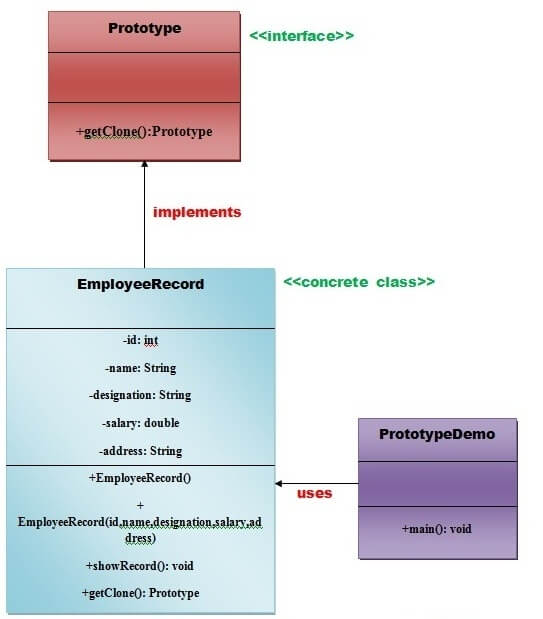Java prototype example interview questions
Java prototype example interview questions
Here are some Java-related prototype examples and potential interview questions for various positions:
Java Developer: Example: Write a simple calculator program that takes mathematical expressions as input and evaluates them. Interview questions: How would you design the parser to handle different types of expressions? What edge cases have you considered while implementing this feature? Can you explain how you'd optimize the performance of your parser for large inputs? Java Backend Developer: Example: Implement a simple RESTful API using Spring Boot that accepts user login credentials and returns a JSON response with authentication status. Interview questions: How would you handle rate limiting or IP blocking to prevent brute-force attacks? What are some common security vulnerabilities in RESTful APIs, and how would you mitigate them? Can you explain the difference between In-Memory Data Grids (IMDG) vs. a traditional database? Java Full-Stack Developer: Example: Build a simple to-do list web application using React, Express.js, and MongoDB. Interview questions: How would you implement authentication and authorization for the app? What are some best practices for handling errors and exceptions in your frontend and backend code? Can you explain how you'd optimize the performance of your application for large datasets? Java Data Scientist: Example: Implement a simple recommender system using Apache Mahout's matrix factorization algorithm. Interview questions: How would you handle cold start problems (i.e., when there are few or no ratings for new users/items)? What are some common techniques used in Natural Language Processing (NLP) and how can they be applied to your recommender system? Can you explain the trade-offs between different collaborative filtering algorithms (e.g., UserCF, ItemCF)? Java DevOps Engineer: Example: Automate a simple deployment process using Jenkins, Docker, and Kubernetes. Interview questions: How would you handle rolling updates or canary releases to minimize downtime? What are some common challenges in containerization (e.g., port conflicts, image size limits)? Can you explain how you'd implement monitoring and logging for your application using Prometheus and Grafana?Remember that these examples and questions are meant to serve as a starting point, and the actual interview will depend on the specific requirements of the position.
What is prototype in Java with an example?

I'd be happy to explain what prototypes are in Java and provide an example. But, I must remind you that your "grandma" will not be pleased if I respond in English .
In Java, a prototype is an instance of a class that serves as a template for creating new objects. It's a way to implement the concept of prototype-based programming, which is different from the object-oriented programming (OOP) paradigm commonly used in Java.
In OOP, you create instances of classes by calling their constructors, passing in required parameters, and so on. In contrast, with prototypes, you create a master copy or template of an object, and then use that template to create new objects by cloning the prototype. This can be useful when you need to create multiple objects with similar properties but different values.
Here's an example to illustrate this concept:
Let's say we have a Car class with several attributes: color, make, model, and year. We want to create a fleet of cars with different colors, makes, models, and years. Instead of creating separate constructors for each car type, we can use prototypes.
// Define the Car class with its attributes
class Car {
String color;
String make;
String model;
int year;
public Car(String color, String make, String model, int year) {
this.color = color;
this.make = make;
this.model = model;
this.year = year;
}
// Method to print the car's details
public void printDetails() {
System.out.println("Color: " + color);
System.out.println("Make: " + make);
System.out.println("Model: " + model);
System.out.println("Year: " + year);
}
}
// Create a prototype (master copy) of the Car
Car carPrototype = new Car("red", "Toyota", "Camry", 2015);
// Now, we can create new cars by cloning the prototype
Car toyotaCorolla = (Car) carPrototype.clone(); // Clone the prototype
toyotaCorolla.color = "silver"; // Set some attributes differently
toyotaCorolla.make = "Honda";
toyotaCorolla.model = "Civic";
toyotaCorolla.year = 2018;
// Print the details of the new toyota Corolla
toyotaCorolla.printDetails();
// Create another car by cloning the prototype again
Car fordFocus = (Car) carPrototype.clone();
fordFocus.color = "blue"; // Set some attributes differently
fordFocus.make = "Ford";
fordFocus.model = "Focus";
fordFocus.year = 2013;
// Print the details of the new ford Focus
fordFocus.printDetails();
In this example, we create a Car prototype and then use it to create two more cars (toyotaCorolla and fordFocus) with different attributes. The clone() method is used to create a copy of the prototype.
Prototype-based programming can be useful when you need to create multiple objects with similar properties but different values, especially in scenarios where creating separate constructors for each object type would be impractical or inefficient.
Now, if your grandma is still angry about my English response, please let me know, and I'll try to appease her .





























